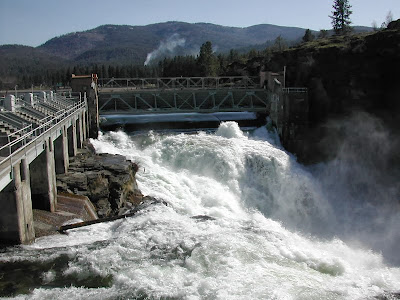Renewable
energy can be defined as the energy that comes from the sources which are
abundant and can be renewable as long as the sources are available. It can come
from various sources such as solar, wave, wind, river (hydro power), geothermal
and also the biomass sources. The main purpose for this renewable energy is to
generate electricity, since most of our electricity sources come from fossil
based such as petroleum and liquid natural gas (LNG). By depending on these two
sources, it is seen as not sustainable way as these sources are not renewable
and are expected to be exhausted by the next few decades.
 |
| Oil and Gas are the main energy sources in the world |
Many
countries have come with different ways in order to counter the limitation
caused by the fossil based resources. Apart from being too expensive, the
petroleum also for example is the main reason for the air pollution, caused by
the car and other vehicles that use petrol and diesel as their power sources.
Since the introduction of cars back in the late 19th century, this
manmade machine has now conquered roads all over the world. The car is no
longer seen as the luxury item yet it is a must for a person nowadays.
Because
of these, many develop countries such as United States, Japan and France have
found another ways of generating electricity. One of the popular yet too
expensive ways is by using the nuclear power plant to produce electricity.
However, many environment activist opposed this method as it is very risky due
to the radiation from the power plant. Still remember what had happen to the
Fukushima Daichii Power Plant back in 2011? =)
In
Malaysia Context
In
the context of Malaysia, majority of the electricity is generated from the
hydropower where there are a lot of hydro dam allocated across the country such
as Kenyir Dam, Temenggor Dam and the biggest in the region – the Bakun Dam
which has recently put some aborigines live in deep Sarawak jungle in damnation
(sorry). Because of the location of our country in the Equatorial zone, we have
received a lot of rains each year which ultimately a very important sources for
generating the hydro dam.The
usage of the hydro electric have keep the electrics tariff in Malaysia is generally
cheap since the last 20 years. Until recently, the Government has decided to
increase the tariff by a little margin to cover the increase of the global oil
and gas however.
 |
| Bakun Dam, Sarawak |
When
we discussed about the Malaysia context, the usage of the hydroelectric dam
even though it is cheap and are the main renewable sources of the country, it
still have a bad implication to the environment. The dam, for example cannot be
existed naturally. We must clean the forest; create such a large buffer zone to
‘hold’ the river water so that the electric can be produced. This has created
such a massive lost of forest area as most of them are being sunk with the
manmade lake. For example the Banding Lake in northern Perak once has some
villages, mainly the aborigine’s people. Once the Temenggor Dam is completed,
all of the villages has gone and sunk in a deep Banding Lake. That is just one
example of the impact form the construction of hydroelectric dam.
 |
| Energy is harvested from the wind |
One
must know how to revolutionize the current method of electricity generating so
that it can become more sustainable to environment and also beneficial the
people fairly. For example, we can turn into another renewable source that is
abundant in Malaysia: the biomass. In my opinion the biomass can be the ‘next
generation’ of electricity generation sources as it is easily available in the
country. The biomass is the process of producing the electricity from the
leftover such as food and agricultural product that are ‘fermented’ in a
certain period of time. When the leftover is fermented, the chemical reaction
released certain gasses that collectively can be used as the electricity
sources (think about the LNG method).
The
sources are taken from the pulp of the oil palm which has been process and can
be found in a very large quantity in Malaysia. Since the oil palm industries
has become a major agriculture industry in the nation, so one might wonder what
had happen to the leftover. A part from seen as the next sustainable element in
the Malaysian industry, it can also produce the electricity form something that
we thought as the rubbish before. For me, that is how we can sustain in the
future in the case of the shortage of oil and gas to produce the electricity.
Yes, it might not be comparable to those two in term of the quantity BUT at
least it is another aspect that we had exploited for ourselves into the better
future. (OK la daripada takde apa) =)
 |
| Oil palm pulp as the biomass sources in Malaysia? |








